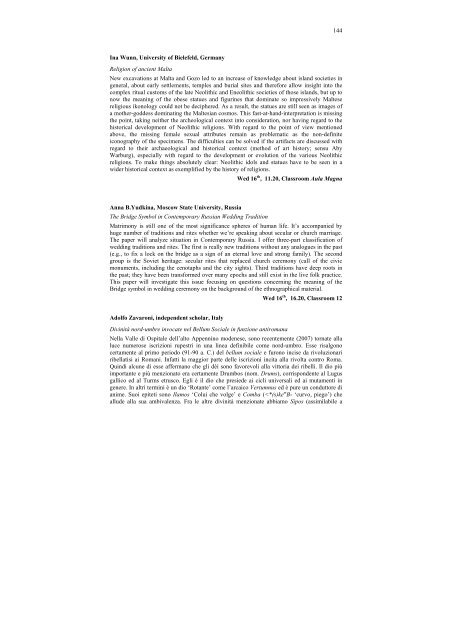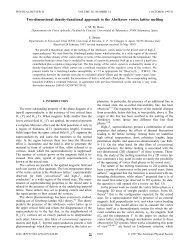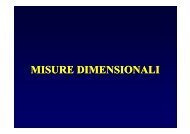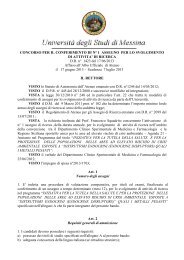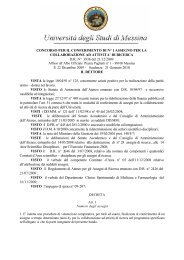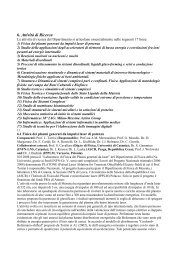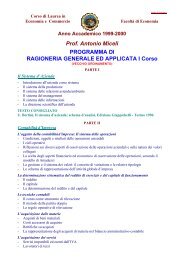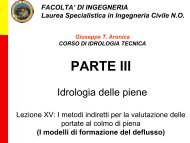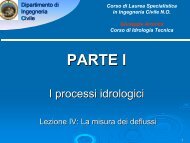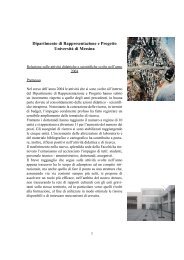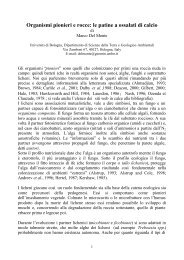PROGRAMME AND ABSTRACTS - Università degli Studi di Messina
PROGRAMME AND ABSTRACTS - Università degli Studi di Messina
PROGRAMME AND ABSTRACTS - Università degli Studi di Messina
Create successful ePaper yourself
Turn your PDF publications into a flip-book with our unique Google optimized e-Paper software.
Ina Wunn, University of Bielefeld, Germany<br />
Religion of ancient Malta<br />
144<br />
New excavations at Malta and Gozo led to an increase of knowledge about island societies in<br />
general, about early settlements, temples and burial sites and therefore allow insight into the<br />
complex ritual customs of the late Neolithic and Eneolithic societies of those islands, but up to<br />
now the meaning of the obese statues and figurines that dominate so impressively Maltese<br />
religious ikonology could not be deciphered. As a result, the statues are still seen as images of<br />
a mother-goddess dominating the Maltesian cosmos. This fast-at-hand-interpretation is missing<br />
the point, taking neither the archeological context into consideration, nor having regard to the<br />
historical development of Neolithic religions. With regard to the point of view mentioned<br />
above, the missing female sexual attributes remain as problematic as the non-definite<br />
iconography of the specimens. The <strong>di</strong>fficulties can be solved if the artifacts are <strong>di</strong>scussed with<br />
regard to their archaeological and historical context (method of art history; sensu Aby<br />
Warburg), especially with regard to the development or evolution of the various Neolithic<br />
religions. To make things absolutely clear: Neolithic idols and statues have to be seen in a<br />
wider historical context as exemplified by the history of religions.<br />
Anna B.Yudkina, Moscow State University, Russia<br />
The Bridge Symbol in Contemporary Russian Wed<strong>di</strong>ng Tra<strong>di</strong>tion<br />
Wed 16 th , 11.20, Classroom Aula Magna<br />
Matrimony is still one of the most significance spheres of human life. It’s accompanied by<br />
huge number of tra<strong>di</strong>tions and rites whether we’re speaking about secular or church marriage.<br />
The paper will analyze situation in Contemporary Russia. I offer three-part classification of<br />
wed<strong>di</strong>ng tra<strong>di</strong>tions and rites. The first is really new tra<strong>di</strong>tions without any analogues in the past<br />
(e.g., to fix a lock on the bridge as a sign of an eternal love and strong family). The second<br />
group is the Soviet heritage: secular rites that replaced church ceremony (call of the civic<br />
monuments, inclu<strong>di</strong>ng the cenotaphs and the city sights). Third tra<strong>di</strong>tions have deep roots in<br />
the past; they have been transformed over many epochs and still exist in the live folk practice.<br />
This paper will investigate this issue focusing on questions concerning the meaning of the<br />
Bridge symbol in wed<strong>di</strong>ng ceremony on the background of the ethnographical material.<br />
Adolfo Zavaroni, independent scholar, Italy<br />
Divinità nord-umbre invocate nel Bellum Sociale in funzione antiromana<br />
Wed 16 th , 16.20, Classroom 12<br />
Nella Valle <strong>di</strong> Ospitale dell’alto Appennino modenese, sono recentemente (2007) tornate alla<br />
luce numerose iscrizioni rupestri in una linea definibile come nord-umbro. Esse risalgono<br />
certamente al primo periodo (91-90 a. C.) del bellum sociale e furono incise da rivoluzionari<br />
ribellatisi ai Romani. Infatti la maggior parte delle iscrizioni incita alla rivolta contro Roma.<br />
Quin<strong>di</strong> alcune <strong>di</strong> esse affermano che gli dèi sono favorevoli alla vittoria dei ribelli. Il <strong>di</strong>o più<br />
importante e più menzionato era certamente Drumbos (nom. Drums), corrispondente al Lugus<br />
gallico ed al Turms etrusco. Egli è il <strong>di</strong>o che presiede ai cicli universali ed ai mutamenti in<br />
genere. In altri termini è un <strong>di</strong>o ‘Rotante’ come l’arcaico Vertumnus ed è pure un conduttore <strong>di</strong><br />
anime. Suoi epiteti sono Ilamos ‘Colui che volge’ e Comba (


